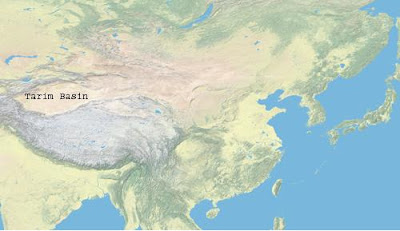China’s hukou system – a brief history, paper, and discussion
Today I had the chance to hear Dr. Donald Treiman, Distinguished Professor of Sociology Emeritus at the University of California, Los Angeles. His talk was titled "The Determinants and Consequences of Hukou (Registration Status) Mobility in China," and discussed issues raised in his paper, co-authored by Dr. Zhuoni Zhang, titled “Social Origins, Hukou Conversion, and the Wellbeing of Urban Residents in Contemporary China.”
The hukou system’s introduction is a blurry one, but it is accepted to have first appeared in 1951 and fully instituted in 1955. The system registers households with their particular region as either rural-agricultural or urban-nonagricultural. Depending on this status, residents are only able to receive certain services from certain places such as education and healthcare. These services are limited to their region of registration. The pretext for this system was officially for the “consolidation of socialist system and public interests,” which in other words means limiting residential choice and migration, so that various political ends could be met. What this means is that people are registered as a certain status and may or may not be able to change, or convert their assigned hukou depending upon various qualifying attributes. For a much more extensive and scholarly discussion of the origins and development of this system, see Chan and Zhang’s paper “The Hukou System and Rural-Urban migration in China: Processes and Changes” from the University of Washington here . For a quick and dirty discussion, just see the Wikipedia article.
Treiman and Zhang’s paper discusses the differences between three groups of people, principally those with rural hukou status living in rural areas (rural), those with rural hukou status living in urban areas (mixed), and finally those with urban status living in urban areas (urban). The number of people considered mixed are in the millions and n particular are a significant percentage of the working-age populace, or about ~18%. The paper first explains the complex methods used to analyze various determinants of this mobility and finally outlines major problems as a result of the system. A major figure is that more than 33% of urban residents with urban hukou converted from rural hukou.
In the discussion, Dr. Treiman began by arguing that China built an urban welfare state on the backs of peasants. He then gave some examples of areas within China with designations of village or rural administration but were clearly an urbanized environment. The primary idea used to guide the discussion was: What affects chances of conversion? Some of the variables included attainment of higher education, income, and occupation type. The primary finding of the paper is that the most probable candidates for conversion are those who reside in urban areas around the age 14.
But why does this even matter? Urban registration comes with a number of attractive advantages, such as better education, less employment friction in a job search, and a “bureaucratic advantage.” Also, self reported statistics such as health and happiness may be somewhat telling. Those of rural hukou who have converted to an urban hukou are “happier” than those of urban hukou as given by a general sociological survey, and that those who converted are also not as healthy, perhaps from malnutrition as a child. It is clear that this system governs mobility in China, both social and geographical.
The talk was given in room 103 of the McNeil Building at the University of Pennsylvania at 12:00PM on October 31, 2011 in conjunction with the PSC Fall 2011 Colloquium Series and the CEAS Humanities Colloquium Series. To download the paper discussed by Dr. Donald Treiman, click here.
F. Miller SAS ‘13

Comments
Post a Comment
We follow the House Rules as outlined by the BBC here.